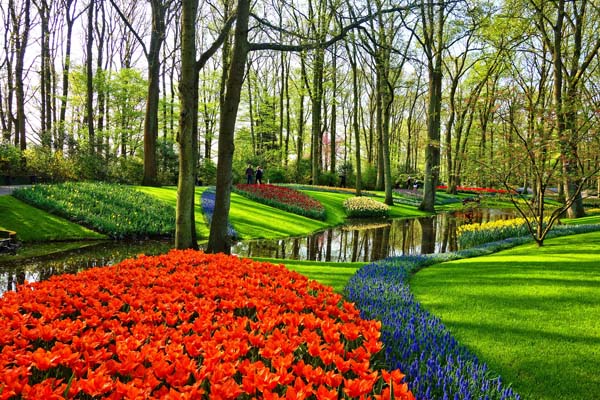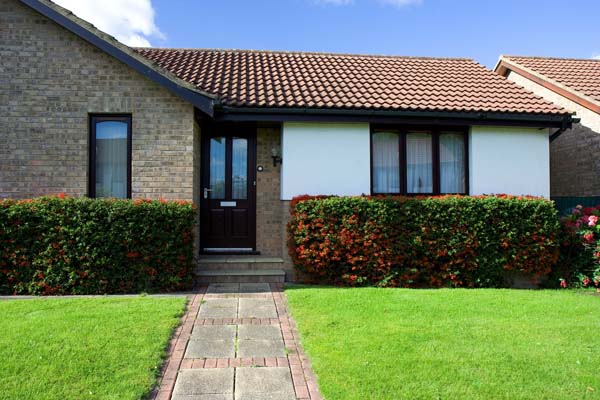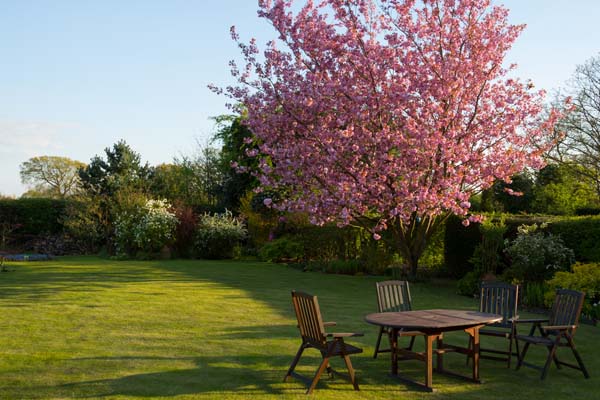There are many different grasses that are available to choose from in the pursuit of the perfectly green lawn, but when it comes to finding the perfect choice for growing in shady areas your options are narrowed down quite significantly.
One common misconception is that Bermuda Grass is the best choice for growing in shade, and whilst there is a truth to the fact that it can handle certain shadier positions, it doesn’t come without it’s demands, the chief of which is sunlight.

But just how much sunlight does Bermuda Grass need per day? And can you still grow it if your lawn is situated in an area that only gets partial shade? We’re here to answer these burning questions and to give you the best advice possible when it comes to growing Bermuda Grass in shade.
Keep reading to find out more!
Sunlight Requirements
As a rule, Bermuda Grass has higher sunlight requirements than most other turf grasses, and the strength and robustness of it’s growth will solely depend on how much sunlight it is exposed to throughout the day.
Bermuda Grass needs at least four hours of sunlight per day in order to grow healthily, so if your lawn is partially shaded throughout the day but gets more than four hours of sunlight between dawn and dusk, then you should be able to grow Bermuda Grass well.

Keep in mind any neighboring trees or buildings that may cast a shadow across certain areas of your lawn as well, however, as this could lead to patches of weaker grass that won’t produce the same levels of chlorophyll and will be much duller (even yellow in some cases) than the healthy looking, vibrant green grass that has had good levels of sunlight exposure.
However not all hope is lost! There are some varieties of Bermuda Grass that have been specially developed to grow really healthily in shadier sights, the most effective of which is TifGrand™ Bermuda, which is renowned for having a higher shade tolerance than all other Bermuda Grass varieties.
Effects of Shade on Bermuda Grass
Attempting to grow Bermuda Grass in areas that don’t get more than a minimum of 4 hours of sunlight per day will have a really detrimental effect on it’s health, and whilst you may notice that it does indeed germinate and start growing, you’ll soon see a few telltale signs that it is suffering.
One of these effects is your grass having abnormally elongated stems, leaves and internodes. This is caused by it stretching and reaching as far out as possible as it tries to hunt down sunlight, and whilst it will look like it’s growing tall from a distance, it will in fact be really leggy and have a super thin structure, meaning that when you mow it will be unlikely to grow back.
Another sign that your Bermuda Grass isn’t getting it’s minimum sunlight requirements is that your entire lawn will begin to thin out. This is because it isn’t getting enough sunlight to photosynthesise into a strong plant, and eventually it will run out of resources and die, leaving you with a thin lawn and bare patches of soil. A thin lawn also leaves it susceptible to invasive weeds such as crabgrass and dandelions which can be really troublesome to get rid of.
Bermuda Grass that has been grown in heavy shade will also be much less resistant to turf diseases and will end up suffering from fungal and root infections, as well as being totally crowded out by moss. The main cause of this is actually a mixture of shade and dew, where the sunlight cannot evaporate the moisture away so it is left sitting on the leaves for much longer.
Growing your Bermuda Grass in areas that get at least four hours of sunshine per day will help to prevent all of the above issues from occurring and will help it develop into a lush, thick, green lawn.

Shade Resistant Alternatives
If your lawn is in full shade for most of the day, then the harsh truth of the matter is that Bermuda Grass probably isn’t the right choice for your garden. That doesn’t mean that you can’t have a full, healthy looking lawn though - you just need to use a different type of grass.
Luckily, there are loads of alternatives to Bermuda Grass that will be more than happy growing in shady areas and will produce a beautiful turf that you can be proud of.
One of these is Ryegrass, which absolutely thrives in shade and will still grow strongly and healthily regardless of the lack of sunlight. St Augustine Grass is also a great choice for growing in partial shade and doesn’t need any more than 4 hours of indirect sunlight per day to grow well.
Many lawns are also positioned in areas that get patches of shade throughout the day, which are usually the cause of shadows being cast by trees, shrubs and surrounding buildings. In this case, you can use different grasses in these shady areas in order to keep your entire lawn looking uniformly green.
Palmetto St Augustine Grass is perfect for this situation as it’s highly tolerant to both adverse soil conditions and changes in temperature. This means it will continue to grow well in shade and drought, and it can even put up with a certain amount of frost without showing any signs of damage.
GeoZoysia is another fantastic shade loving grass, and it produces a rich, deep color on fine blades that is ideal for filling in shady gaps on an existing lawn, or for creating an entire green space in shadier areas where anything else would struggle to grow well.
And, as we’ve mentioned above, you can also use TifGrand™ Bermuda to fill in bare spots and scatter into shadier areas. So, if you’ve absolutely got your heart set on Bermuda Grass, then this would be the one to look out for.
Finally, it’s always worth growing some of your chosen grass seed in plugs and then transplanting them into the lawn itself. This is useful on two levels; first of all you’ll be able to see over time whether the grass you’ve chosen is going to survive and be happy in the shady spot it’s being planted into.
Secondly, you’ll effectively be creating your own turf patches, which gives you a head start on getting better results during the growing season, and removes the risk of any birds snacking on the seeds you’ve scattered into the shady spots of your lawn.
Caring For Bermuda Grass in Shade
If your lawn is already formed of Bermuda Grass and is situated in partial shade, but it’s looking like it could use a little tender loving care, then there are some things you can do to help improve it’s overall health and ensure it grows as strongly as possible.
The most obvious solution is make sure that you’re regularly mowing and feeding it during the growing season. Mowing your lawn actually shocks it into stimulating more growth, and that growth always comes back stronger. By keeping your lawn short throughout the growing season, you’re also preventing long grass from laying across neighboring blades and in turn you’ll be providing an even spread of sunlight.

After mowing, apply a special lawn feed that is high in nitrogen (either mixed up in a watering can or with a garden sprayer) as this will give the grass extra nutrients and encourage it to grow back healthily. As well as a weekly feed, it can also find super powerful lawn feeds that only need to be used once a year, and that will also help to kill any weeds without affecting the grass.
If you’re unsure as to how short you need to cut, the general mowing rule for Bermuda Grass is to leave it at 1.5 inches high for hybrid varieties (such as TifGrand™ Bermuda), and to leave a height of 1 inch for common varieties. This leaves it will enough growth to photosynthesise and generate more, without cutting it so short that it will take a while to recover.
You can also help your Bermuda Grass grow strongly by cutting back any overhanging branches that cast a shadow onto your lawn. This will allow more sunlight onto the surface of the grass, which can then be photosynthesised into food and used to generate more growth.
Reducing foot traffic on the shadier areas of your lawn will also really help your Bermuda Grass to grow strongly, so try fencing off certain areas and forbidding children or pets from running riot on those spaces. Your lawn will certainly thank you for it, and will use the breathing space to produce really healthy blades of gorgeous green grass.

